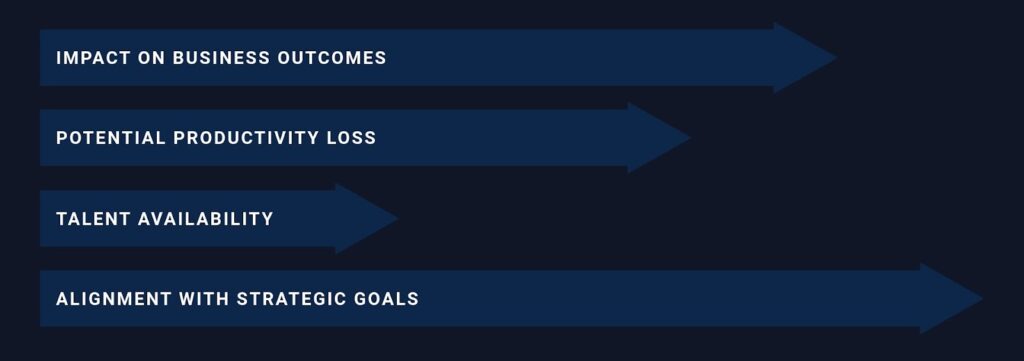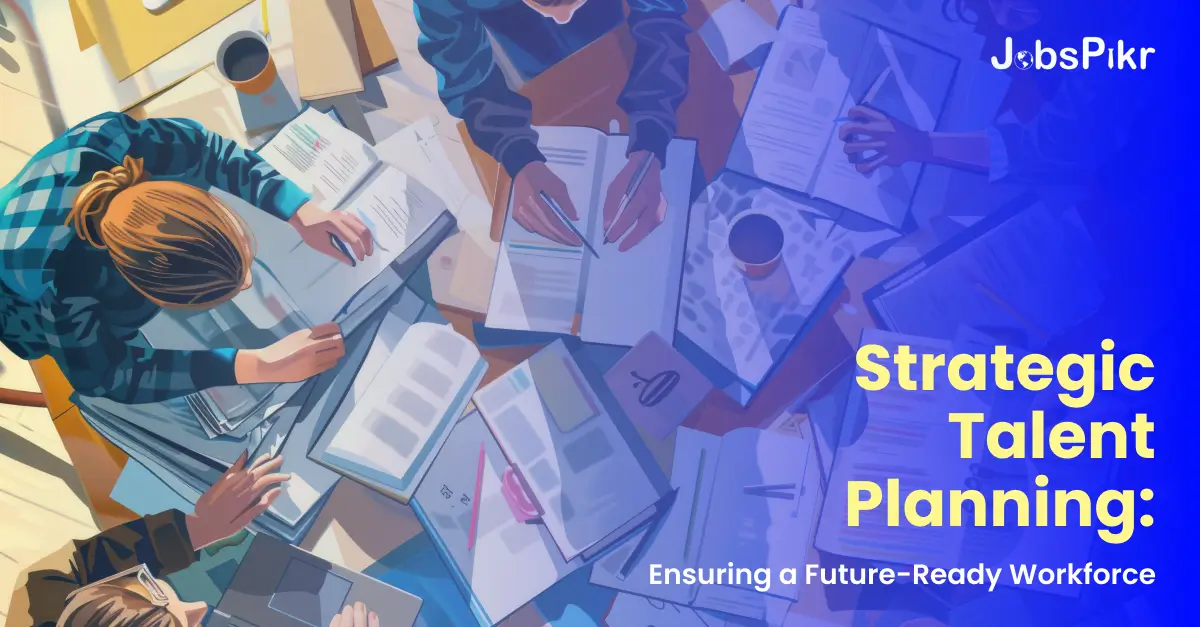Corporate HR departments face the dual challenge of filling critical roles while also developing a workforce equipped to meet future demands. Talent planning has emerged as a powerful, proactive approach to manage these workforce needs, ensuring that organizations remain agile, competitive, and resilient. In this comprehensive guide, we will explore what talent planning entails, dive into talent planning best practices, and uncover strategies for succession planning, critical role identification, and leadership development.
What is Talent Planning?
Talent planning is the systematic process of forecasting future workforce needs, identifying skill gaps, and preparing employees to step into critical roles as they arise. Unlike traditional hiring practices, which are often reactive, talent planning is proactive, seeking to cultivate a robust internal talent pool. This approach aligns workforce capabilities with organizational goals, ensuring that the business is always equipped with the right skills and people to tackle emerging challenges.
By focusing on talent planning best practices, companies can reduce recruitment costs, improve employee engagement, and decrease turnover rates. For corporate HR departments, talent planning is not merely an operational tool but a strategic initiative to build a future-ready workforce.
How Talent Planning Shapes HR Department Goals?
Effective talent planning is essential for HR departments aiming to position their organization for sustained success. Here’s why talent planning should be a priority:
- Fills Skill Gaps: In a highly specialized workforce, talent planning helps identify current and future skill gaps, allowing organizations to focus on employee development and prevent costly skill shortages.
- Ensures Succession: By preparing employees for advancement, talent planning mitigates the risks of unexpected vacancies in leadership or other critical roles.
- Promotes Diversity and Inclusion: Proactive talent management fosters diversity by intentionally promoting talent from varied backgrounds.
- Enhances Employee Retention: Employees are more likely to stay with organizations that invest in their future, leading to a more engaged and loyal workforce.
- Strengthens Competitive Advantage: With the right people in place, companies can innovate faster and respond to market shifts more effectively.
Core Aspects of an Effective Talent Planning Process
A well-rounded talent planning strategy consists of multiple elements, each aimed at fostering a workforce that is prepared to meet both current and future challenges. Here are the primary components to consider:

1. Succession Planning: Building Leadership for Tomorrow
Succession planning is the process of identifying and nurturing future leaders within the organization. This component of talent planning ensures that critical leadership roles will always have qualified, prepared candidates ready to step in.
Best Practices for Succession Planning:
- Identify Critical Roles: Pinpoint the roles that are crucial for your organization’s success, particularly in leadership positions.
- Develop a Talent Pipeline: Actively groom high-potential employees by providing them with growth opportunities, mentorship, and training.
- Focus on Development: Tailor professional development programs to help employees build the skills needed for their future roles.
Real-World Example: Johnson & Johnson is known for its rigorous succession planning strategy. They ensure continuity by identifying leadership candidates years in advance and investing heavily in their development, ensuring a smooth transition when leadership changes are required.
2. Critical Role Identification: Prioritizing Key Positions

Another core element of talent planning is critical role identification, which focuses on roles that are essential to the organization’s success. While all roles contribute to an organization’s function, certain positions, if left unfilled, can significantly impact performance and productivity.
Best Practices for Identifying Critical Roles:
- Evaluate Business Needs: Understand the organization’s strategic goals to determine which roles are essential.
- Analyze Role Impact: Look beyond job titles and assess the potential impact of each position on achieving business outcomes.
- Create Succession Benchmarks: Establish specific skills and competencies needed for these critical roles, ensuring the right talent is always available.
Real-World Example: AT&T has a structured process for critical role identification, where it evaluates the impact of each position on its strategic goals. By recognizing roles that are vital to innovation and customer satisfaction, they ensure their key positions are always staffed by capable talent.
3. Leadership Development: Empowering the Next Generation of Leaders
An effective talent planning strategy prioritizes leadership development by equipping employees with the necessary skills, mindset, and vision. Investing in leadership development can yield significant benefits in areas like employee engagement, performance, and organizational resilience.
Best Practices for Leadership Development:
- Personalized Development Plans: Tailor leadership development programs to match individual strengths, career aspirations, and organizational needs.
- Provide Coaching and Mentorship: Enable experienced leaders to mentor high-potential employees, facilitating skills transfer and practical insights.
- Encourage Cross-Functional Exposure: Rotate future leaders across departments to give them a holistic understanding of the business.
Real-World Example: General Electric (GE) is well-known for its leadership development programs, particularly through initiatives like the GE Crotonville Leadership Institute. This program provides a mix of formal learning, cross-functional training, and mentoring, which has produced numerous leaders both within GE and across various industries.
How to Implement an Effective Talent Planning Strategy?
To build a future-ready workforce, organizations must take a structured approach to talent planning. Here’s a step-by-step guide to putting talent planning best practices into action:
Step 1: Conduct Workforce Planning and Analysis
Begin with a thorough analysis of your current workforce to understand the skill levels, competencies, and demographics. A data-driven approach can reveal patterns in talent gaps, strengths, and future requirements.
- Data Collection: Collect quantitative and qualitative data on current employees, including performance reviews, skills assessments, and demographic information.
- Forecasting Needs: Use this data to project future talent needs based on strategic objectives, anticipated retirements, and turnover rates.
Step 2: Identify High-Potential Employees
After assessing the workforce, focus on identifying high-potential employees who show strong promise for future leadership or other critical roles. Criteria might include performance, adaptability, learning agility, and leadership capabilities.
- Performance Metrics: Look at both current and past performance.
- Soft Skills Assessment: Evaluate key soft skills such as emotional intelligence, communication, and decision-making abilities.
Step 3: Develop Individualized Development Programs
Create development programs that align with employees’ career aspirations and the organization’s future needs. Ensure these programs include a mix of formal training, on-the-job learning, and mentorship.
- Goal Setting: Set clear, actionable goals for employees to meet as they progress through their development.
- Mentorship Matching: Pair employees with mentors who can provide insights, guidance, and support tailored to their career path.
Step 4: Implement a Monitoring and Feedback System
A feedback system is essential for tracking the progress of talent planning initiatives. Implement tools and processes to monitor the effectiveness of development programs, employee progress, and readiness for critical roles.
- Performance Reviews: Regularly review performance data to track employee progress.
- Employee Check-ins: Conduct frequent check-ins to assess satisfaction, engagement, and development progress.
Step 5: Regularly Update the Talent Plan
Business goals evolve, and talent planning must evolve with them. Review and update your talent plan to align with shifts in the company’s goals, industry changes, and talent market trends.
- Annual Reviews: Conduct a yearly review of the talent plan.
- Adjust for Market Trends: Adapt strategies based on market conditions, economic shifts, and competitive landscape.
Top Metrics to Evaluate Talent Planning Effectiveness

Assessing the impact of talent planning efforts is essential to fine-tuning the strategy. Consider these metrics to measure success:
- Internal Promotion Rate: Tracks the percentage of key roles filled by internal candidates, indicating the effectiveness of succession planning.
- Employee Retention Rate: Measures whether high-potential employees are staying with the organization, a sign of successful talent engagement.
- Skills Gap Reduction: Evaluates the improvement in workforce skills aligned with organizational needs, demonstrating the effectiveness of development programs.
- Leadership Readiness: Assesses how prepared potential leaders are to step into critical roles, revealing the impact of leadership development initiatives.
Conclusion:
In today’s dynamic business environment, organizations must go beyond traditional hiring methods to ensure they have a workforce prepared for the future. By investing in talent planning best practices, corporate HR departments can cultivate a talent pipeline that is agile, capable, and aligned with the company’s long-term goals.
With a solid talent planning framework, organizations can remain resilient, competitive, and future-ready. To build a sustainable talent strategy and stay ahead in today’s competitive market, leverage data-driven insights with Jobspikr. Sign up on Jobspikr to access real-time job market data and enhance your talent planning with the latest industry trends.



